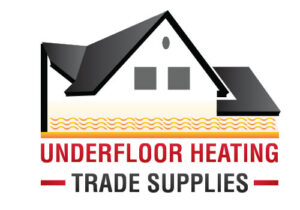Are you considering an upgrade to your home heating system? Mixing underfloor heating and radiators might be the innovative solution you’re looking for.
Within the heating industry there is a continuous debate as to whether underfloor heating or radiators is better for the home, in terms of their efficiency, comfort, cold spots, and other features. Is underfloor heating vs radiators really needed, and can they both get along seamlessly within the home? In this article, you will learn if underfloor heating and radiators can work together in homes, and what methods can be implemented to ensure that they do, from cost, to potentially replacing radiators, their pros and cons, and more.
Key points:
- Discover the practical benefits of zone heating controls in managing home heating.
- Understand the compatibility of underfloor heating with traditional radiators.
- Explore cost-effective strategies for installation and maintenance.
- Gain insights into the best heating options for new constructions versus renovations.
- Learn how these systems can operate together to enhance energy efficiency.
Can Underfloor Heating Replace Radiators?
In a surprising turn, yes, it is possible for underfloor heating to replace radiators in many homes, as they offer a more sleek and efficient heating solution that can be hidden away beneath the floorboards without having anything stuck on the walls like radiators do.
However, its effectiveness largely depends on the specifics of your property. Underfloor heating is ideal for well-insulated and sealed homes but may not be as effective in older, existing properties without proper insulation.
In such cases, the energy costs could affect the benefits as these homes might require significant upgrades to make underfloor heating viable.
Furthermore, in newer constructions or well-renovated homes, combining underfloor heating and radiators can provide a better heating solution. This setup allows for underfloor heating on lower levels where people spend most of their time, with radiators installed upstairs. Such a combination benefits from dual thermostats allowing for different temperature controls across the house, optimising comfort and energy usage.
Cost Difference Between Underfloor Heating vs Radiators
Underfloor heating systems, while often more expensive to install, especially in retrofit situations, can be more cost-effective in the long run.
These systems use less energy compared to traditional radiators—up to 25% less energy in typical scenarios, and even 40% when integrated with a heat pump. This translates to lower heating bills and a smaller environmental footprint, making underfloor heating a more eco-friendly choice.
How to Add Underfloor Heating to a Home

Underfloor heating can be integrated into your home in two main ways:
- Underfloor Central Heating Pipes: If your home already has a central heating system, underfloor heating pipes can be connected to this system. They lie beneath the flooring and are controlled just like radiators—via your home’s boiler and thermostat.
- Electric Underfloor Heating: An increasingly popular option given rising energy costs, electric systems consist of heat mats or cables placed under the floor. These are simpler and cheaper to install, can be controlled via a thermostat, and are ideal for targeted heating.
Economic Considerations
Despite the higher initial cost, particularly for retrofit installations, the overall savings offered by underfloor heating systems can make them a worthwhile investment over time.
Furthermore, the added comfort and the premium appeal of underfloor heating can also increase the market value of your property, making it a desirable feature for potential buyers.
Installing in New Builds and Extensions
When planning a new build or an extension, many homeowners choose to integrate underfloor heating with radiators. This double approach allows for underfloor heating (UFH) to be installed in new sections where concrete floors make it ideal, while existing parts of the home retain their radiators.
Practicality and Cost-Effectiveness in Floor Heating
It’s common to find UFH installed on the ground floors of new homes where people spend most of their time, with radiators warming the upper levels. This division isn’t due to limitations in UFH technology but rather a strategic choice based on cost-effectiveness and ease of installation. UFH systems are particularly suited to timber-suspended constructions and can indeed be extended to upper floors if desired.
How to Combine Underfloor Heating and Radiators
Underfloor heating and radiators require different water temperatures to operate efficiently. A common solution is to set a single boiler to heat both systems.
Radiators are typically designed to run at higher temperatures (around 60°C), while UFH systems require lower temperatures (around 40°C). By employing a blending valve and pump connected to the manifold, the temperature of the water can be adjusted before it circulates through the UFH, ensuring both systems work harmoniously.
System Configuration Choices
Choosing the right system configuration is crucial for bringing better efficiency and compatibility between underfloor heating and radiators.
The S-plan, which involves using two-port valves—one for the radiator circuit and another for the UFH circuit—is recommended. This setup allows for independent control of each system, avoiding the need for unnecessary heating and maximising energy savings.
Thermostat and Control Systems
To effectively manage these systems, homeowners might choose programmable thermostats that allow for different settings in each zone. For homes using simpler controls, a two-channel timer might be necessary, providing separate channels for radiators and underfloor heating, with an optional third for domestic hot water.
Addressing the Bypass Issue
Using thermostatic radiator valves (TRVs) can sometimes lead to closed circuits, causing the boiler to run without heat demand.
Incorporating an automatic bypass valve or installing a non-TRV towel rail in the system can ensure proper flow and system functionality. Underfloor heating systems typically include their own controls and wiring centres that prevent these issues by ensuring the boiler only fires when there is actual demand.
Pros and Cons of Underfloor Heating
As a lead distributor of underfloor heating in the UK, we are well aware of the benefits and limitations that they can bring to homes, and so it’s only fair that you know the same as well to make an unbiased decision on whether to choose underfloor heating or radiators:
| Pros | Cons |
| Underfloor heating (UFH) offers a consistent warmth that radiates from the ground up, eliminating cold spots and draughts. This system heats a room evenly and provides a comfortable environment, especially during colder months. | Despite the long-term savings, the initial cost of installing underfloor heating can be higher due to the need for more components (often a turn off for many people) and a more complex installation process. |
| By covering a large surface area and operating at lower temperatures compared to radiators, UFH can be up to 25% more energy-efficient, and even 40% when used with a heat pump. | New users might require some time to familiarise themselves with the operation of underfloor heating systems as they differ significantly from traditional radiators. |
| With its pipework hidden beneath the floor, underfloor heating offers a clean aesthetic by freeing up wall space that would otherwise be occupied by radiators. | |
| UFH systems can be installed in various types of properties, including during renovations or in new builds, without the need to alter existing heating systems like boilers. |
Pros and Cons of Radiators
But what about radiators? After all, they are a common necessity in UK homes.
| Pros | Cons |
| Their operation is widely understood by both homeowners and professionals, meaning they can be easily maintained and adjusted when needed. | Radiators often produce uneven heat, with a tendency to warm nearby spaces while leaving distant corners cold. This can lead to higher energy usage as users increase the heat setting to warm an entire room. |
| Radiators provide quick heat to a targeted area, making them practical for rapid warmth. They are especially useful in climates where temperatures can change quickly. | Occupying valuable wall space, radiators can dictate furniture placement and room design, which may not align with modern minimalist aesthetics. |
| Standard radiators are not typically compatible with heat pumps, which require lower water temperatures. Specifically designed low-temperature radiators or significantly larger models are needed to achieve the same heating effect. |
Underfloor Heating and Radiators in Existing Builds

When modernising an existing building, the decision between underfloor heating (UFH) and radiators hinges on the renovation’s extent.
Installing UFH might seem daunting, as it often involves lifting floors, which can be disruptive. Therefore, retrofitting underfloor heating in a home is the best option here since the home can be adjusted around the heating system.
Underfloor Heating on a Budget
For minor updates or tight budgets, replacing existing radiators might be more practical. But if an extension is planned, installing a UFH system could provide long-term benefits, though it may involve upgrading insulation to achieve better efficiency.
Underfloor Heating vs Radiators: Installing in New Builds
In new builds, underfloor heating often presents a more appealing option.
It can be seamlessly integrated during the construction process, particularly with screed floors, providing cost-effective heating.
Given its up to 25% more energy efficiency compared to radiators, UFH not only lowers operational costs but also improves open-plan living spaces without the aesthetic disruption of radiators.
Underfloor Heating Installation in Single Rooms
The choice between UFH and radiators in a single-room renovation depends largely on the room’s function and existing setup.
Contrary to common belief, UFH can be a cost-effective solution even in spaces already equipped with radiators. It’s particularly suitable for kitchens and living areas where luxury and space maximisation are desired, as it frees up wall space that would otherwise be occupied by radiators.
Expanding with New Extensions
For new extensions, UFH can often be the best approach. Since extensions require compliance with current building regulations that require high insulation levels, UFH systems are typically well-suited to these environments. They can operate independently or in conjunction with the existing radiator system.
Choose Us For An Ideal Underfloor Heating Installation
When integrating underfloor heating with radiators or opting solely for UFH, Underfloor Heating Trade Supplies prioritise customer service, offering attentive support that aligns with your specific heating and layout requirements. Each home has unique characteristics; therefore, a one-size-fits-all approach doesn’t suffice.
We provide bespoke UFH designs to ensure that the system complements your home’s structure efficiently, balancing comfort and energy use. We also have a dedicated blog thriving with valuable information about underfloor heating and much more.
Here’s some further reading to try based on this article:
- Learn about underfloor heating pipe spacing so that your system doesn’t appear clumped.
- Knowing how to combine ground source heat pumps with underfloor heating is as challenging as it is rewarding.
- Be sure to recognise how to monitor your underfloor heating pressure.
- Extensions and conservatories are often one and the same – learn how to install underfloor heating in a conservatory.
FAQs
Is it cheaper to run underfloor heating or radiators?
Underfloor heating is generally more energy-efficient and can be cheaper to run than radiators, especially in well-insulated rooms, as it operates at a lower temperature while distributing heat more evenly.
Do you need radiators if you have floor heating?
No, you do not necessarily need radiators if you have underfloor heating. Underfloor heating can serve as the primary heating source, providing sufficient warmth across the room. However, in very cold climates or in larger rooms with high ceilings, supplemental heating like radiators might be needed.
Sources
Scholfield, W., (2024) What are Thermostatic Radiator Valves and do I need them? Boxt. [online] Available at: https://www.boxt.co.uk/boilers/guides/what-are-thermostatic-radiator-valves-and-do-i-need-them [accessed 16/09/24]
